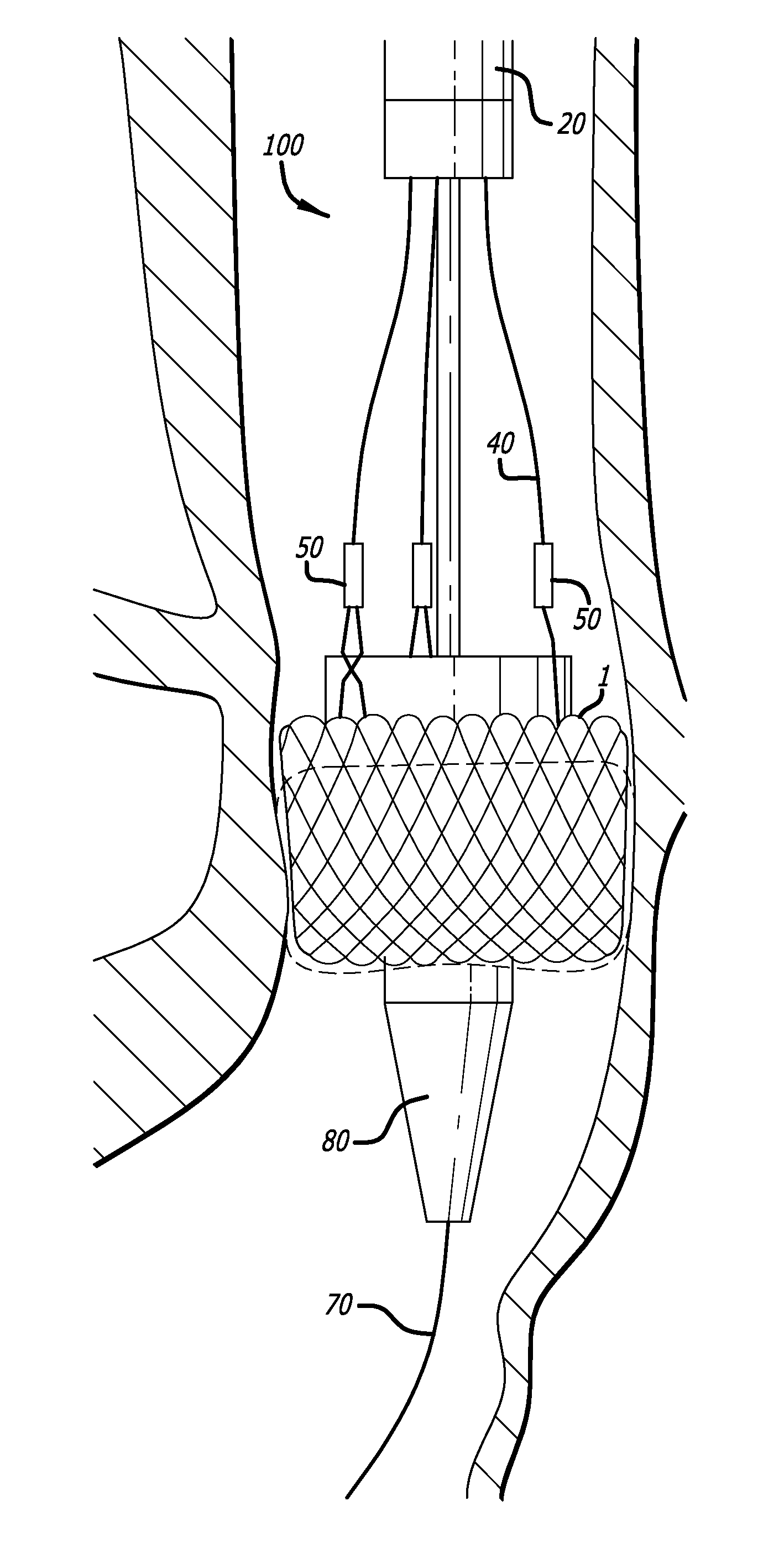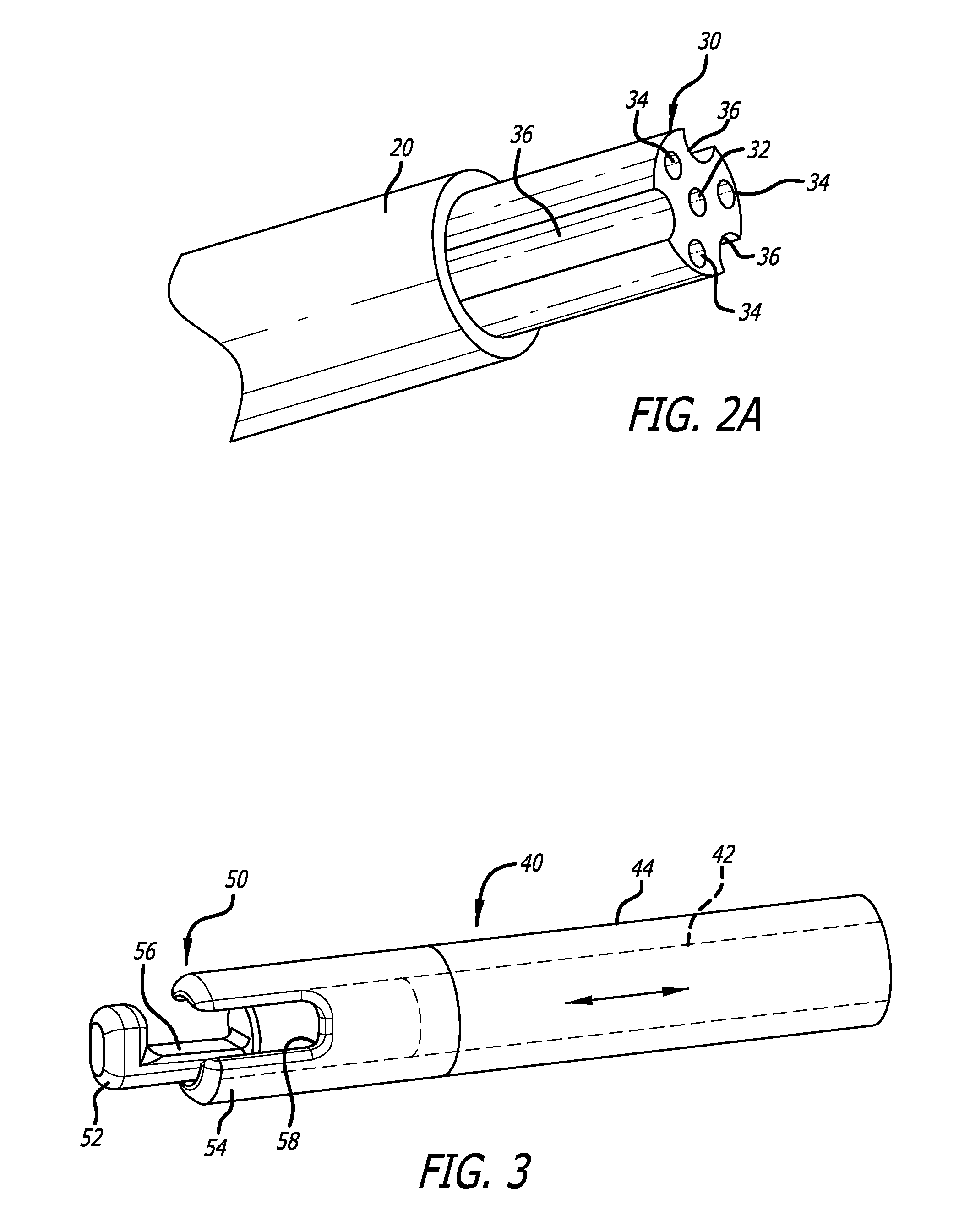Inversion Delivery Device and Method For A Prosthesis
a technology of inversion delivery and prosthesis, which is applied in the field of inversion delivery device and method for prosthesis, can solve the problems of stenosis, narrowing of the passageway through the valve, heart failure and ultimately death, and great discomfort, and achieves precise positioning and inversion, limiting the advancement of a portion, and precise positioning
- Summary
- Abstract
- Description
- Claims
- Application Information
AI Technical Summary
Benefits of technology
Problems solved by technology
Method used
Image
Examples
Embodiment Construction
[0052]Referring now to the Figures and first to FIG. 1, there is shown a distal end of a delivery device 10 of the present invention. The delivery device generally includes a delivery catheter 20, and a pusher catheter 30 slidably contained within the delivery catheter 20. The pusher catheter 30 is preferably a multi-lumen catheter containing lumens for slidably containing and maintaining alignment of three attachment cables 40 (hereinafter “valve retention cables”) (see FIG. 3), each of which has a releasable grasping mechanism 50 at a distal end thereof. The delivery device 10 also includes at least one positioning mechanism 60 used to aid the tool or implant 1 in achieving a folded, deployed configuration from an extended, unfolded, navigation configuration. In one embodiment, the at least one positioning mechanism 60 is attached to a distal end of the delivery catheter 20. In another embodiment, the at least one positioning mechanism 60 is slidably contained within the delivery ...
PUM
 Login to View More
Login to View More Abstract
Description
Claims
Application Information
 Login to View More
Login to View More - R&D
- Intellectual Property
- Life Sciences
- Materials
- Tech Scout
- Unparalleled Data Quality
- Higher Quality Content
- 60% Fewer Hallucinations
Browse by: Latest US Patents, China's latest patents, Technical Efficacy Thesaurus, Application Domain, Technology Topic, Popular Technical Reports.
© 2025 PatSnap. All rights reserved.Legal|Privacy policy|Modern Slavery Act Transparency Statement|Sitemap|About US| Contact US: help@patsnap.com



